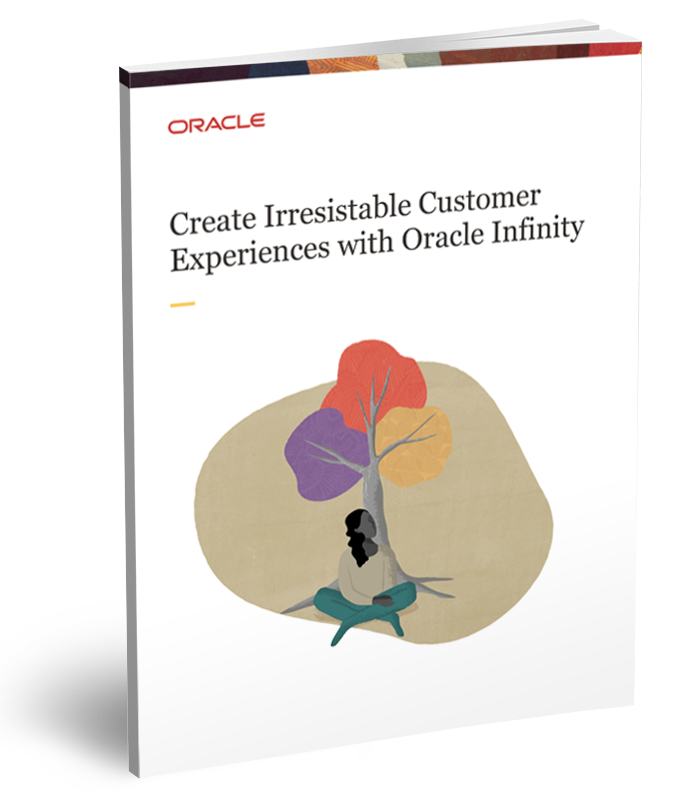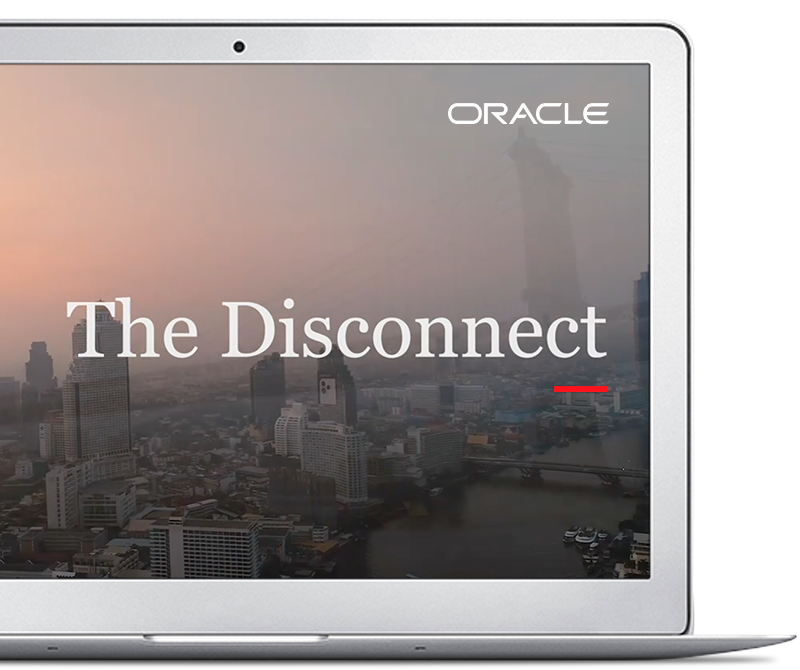Bridging the Digital Divide





Government agencies are pouring tens of billions of dollars into new broadband infrastructure projects throughout the world to close the great Digital Divide. Service providers of all kinds have taken note and are now angling for a share of these huge public funding pies. This diverse group includes both smaller, emerging broadband providers that aim to serve just one or a handful of tiny rural communities and larger, established operators that cover national or sizable regional footprints. The group also includes a spate of new public and private players looking to break into the highly lucrative and ever expanding broadband market.
However, even as these new public funding spouts are turning on, other major challenges must be overcome before the Digital Divide can be closed—or at least significantly narrowed. Besides getting critical funding support, service providers must assemble the labor, materials, equipment, and contractors to build the new broadband networks. They must secure federal, state, regional, and/or local regulatory approvals to install the new networks and serve customers. And in many cases, they must work out agreements with utilities to share poles or other facilities.
Most importantly, service providers must craft solid financial plans that support their goals of connecting unserved and underserved areas and making money. They must develop cost-effective strategies to recruit and retain subscribers on low or fixed budgets who have been tough for operators to attract. In other words, they must find realistic ways to close the Digital Divide without losing their shirts in the process.
How much can telcos, cable operators, fiber providers, wireless operators, utilities, municipalities, and other broadband players leverage the wide array of public funding programs to close the Digital Divide? What kinds of networks are operators and vendors looking to build, adapt, and/or expand? What are the biggest challenges they face in wiring rural and other unserved regions, and how can they meet these challenges?
To address these and related issues, Heavy Reading teamed up with four leading tech suppliers—Corning, DZS, Radisys, and Vantiva (formerly Technicolor)—to launch a comprehensive initiative examining the Digital Divide. Most notably, the initiative included an exclusive survey of broadband providers globally to gauge their strategies, plans, and timelines for closing the Digital Divide in the regions they cover, including the challenges they face and the technologies they aim to use.
In this white paper, Heavy Reading presents the results of that survey, analyzes the findings, and discusses the implications. We also draw some conclusions about what the findings mean for the overall drive to close the Digital Divide around the world.
Part of the problem in bridging the Digital Divide is settling on a definition of the problem. In the US, for instance, different federal government agencies and programs have developed different metrics for determining when regions are unserved or underserved.
To cite two prime examples, the Federal Communications Commission (FCC) uses 25Mbps downstream and 3Mbps upstream as the minimum bar for fixed broadband service. Meanwhile, the National Telecommunications and Information Administration’s (NTIA’s) new Broadband Equity, Access, and Deployment (BEAD) program sets 100Mbps downstream and 20Mbps upstream as its standard.
For the purposes of this study, Heavy Reading abides by the NTIA’s more recent standard. Therefore, any region receiving service of less than 100Mbps down and 20Mbps up will be considered on the wrong side of the Digital Divide. Even if the bar is set as low as the FCC standard, though, the Digital Divide is clearly a huge problem, both in the US and elsewhere.

2020 Open RAN Operator Survey: Measuring Progress and Looking Ahead to Open RAN at Scale
TECHNOLOGY STATUS, PLANS, & STRATEGIES
The Heavy Reading survey first sought to determine which broadband access platforms service providers are using or plan to use to close the Digital Divide in their territories. Fiber emerged as the overwhelming favorite here, with about seven-eighths (87%) of respondents choosing it. No other option came even close to matching that total.
FWA technology came in second, with 40% of survey participants picking it, while HFC finished third with 35%. No other choice scored above 22%.
Thus, it seems clear that service providers plan to lean heavily on fiber to build new broadband networks and extend their existing networks. Even pure cable operators, which made up 20% of the sample size, now appear inclined to deploy fiber-to-the-premise (FTTP) networks in new areas rather than their legacy HFC architecture.
Next, the Heavy Reading study asked participants whether gigabit broadband service is available in the communities they serve today. Slightly more than three-fifths of operators (61%) responded positively, confirming that 1 Gig is already available, while an additional 14% said such service should be available by the end of this year (2022).
Another 23% said 1 Gig service should be available by the close of either 2023 or 2024. Only a scant 2% said no such service is either available now or planned in the future, as shown in Figure 3.
The survey then pivoted to a critical scaling question, asking participants whether their current architecture allows them to scale their operations on a single platform. Most of the responses were favorable, if guardedly so. Nearly one-half of the respondents (48%) declared that their architecture was potentially scalable, while another 41% said it definitely was. Only 11% said no, as pictured in Figure 4.
That sounds like good news for service providers because it indicates that most believe that they will be able to scale up on a single platform to meet the needs of the Multi-Gigabit Age. In other words, most providers do not think they will need to replace their current architecture with a new one in the foreseeable future.
From there, the study pivoted to the central Digital Divide issue. Specifically, the survey asked operators how much of the Digital Divide problem is concentrated in the rural regions that they cover.
Surprisingly, it turns out to be less than one might expect. More than one-half of survey participants (56%) said that rural areas accounted for no more than 25% of the Digital Divide issue in their regions, with 14% saying it accounted for less than 10%.
On the other hand, 44% of respondents said that rural regions accounted for more than one-quarter of their Digital Divide issues. And more than one-sixth of respondents (17%) said over one-half of their Digital Divide challenges came from rural areas, as shown in Figure 5.
Moving on, the study questioned operators about their plans to use FTTH technology to close the Digital Divide in their footprints. Once again, given all the public funding pouring into the broadband sector right now, the results ended up being a bit surprising: fewer respondents than expected identified FTTH as the prime platform they intend to leverage.
In fact, just slightly more than one-half of providers (52%) said they will use FTTH to close no more than 25% of the Digital Divide problem in their regions. Plus, nearly half of that group (24% overall) indicated that they will leverage fiber less than 10% to address the issue, as shown in Figure 6.
At the same time, the remaining 48% of the survey sample intend to rely on FTTH to close at least 26% of the Digital Divide in their areas. Further, more than one-fifth of respondents (22%) plan to utilize fiber to bridge more than half of the Digital Divide in their regions.
It would be interesting to learn which other technologies and/or platforms providers are eyeing to close the Digital Divide instead of FTTH. Unfortunately, that question was beyond the scope of this survey.
In a related question to the FTTH query above, the survey next asked operators about their interest in using new optical edge technology to upgrade the middle-mile networks in their regions. In this case, the results were less surprising, as most operators showed strong enthusiasm for leveraging the latest optical edge advances.
Indeed, as depicted in Figure 7, nearly two-thirds of study participants (65%) indicated that their organization is interested in upgrading their middle-mile networks with new optical technology. Further, only 10% said they were not interested, with the remaining 25% responding that they did not know.
Thus, service providers are looking for ways to upgrade their middle-mile networks to handle the ever-growing traffic loads that they are carrying. And providers are intrigued about leveraging new optical edge technology to carry out that task.
PUBLIC FUNDING PROGRAMS
In this section, the Heavy Reading study turned to the various public funding sources for closing the Digital Divide. The study sought to determine whether operators are looking for government subsidies to finance their broadband buildouts, what kinds of subsidies they are seeking, and, if they are not seeking such subsidies, why they made that decision.
First, the survey asked operators whether they have applied for or been awarded public grant money to build or improve their broadband infrastructure. Respondents could choose from a number of options.
As might be expected given the huge sum of public subsidies that are now or will soon be available, most service providers are pursuing government help for their broadband infrastructure buildouts. In fact, nearly two-thirds of survey participants (65%) said they have already applied for public funding. The remainder have either not applied or are not eligible for government aid.
Notably, as shown in Figure 8, nearly one-quarter of the total sample (24%) have already been awarded government grants for their builds. Another 24% of respondents have applied but have not received approval yet, while the other 17% applied but did not receive awards.
These findings confirm the basic premise that generous government assistance would spur service providers to move much faster to close the Digital Divide. It will be interesting to see what will happen if and when the public funding spigot is turned off.
Given all the public subsidies now available for building broadband infrastructure, Heavy Reading wondered why some service providers would choose not to pursue such assistance. So, the study asked operators who are not participating in public funding programs why they have declined to do so.
With multiple answers allowed for this question, the results were spread out fairly evenly across the board. Leading the pack, one-third of respondents (33%) cited better private investment opportunities, as can be seen in Figure 9. Nearly as many (29%) noted supply chain challenges. One-quarter (25%) chose onerous fair labor practices, and the same number selected poor long-term ROI. In addition, 21% picked onerous reporting requirements, and the same number named insufficient subsidies/onerous matching funds requirements.
Thus, while public subsidy programs are clearly popular among service providers, they are not universally so. This finding suggests that government officials have more work to do to recruit more service providers for the Digital Divide cause.
Staying on the public funding subject, the study next looked at when operators applying for public subsidies pick their component vendors. The aim was to find out at what point in the grant application and award process providers make these crucial decisions.
As it turns out, the largest portion of operators already have those vendor decisions made in advance. Nearly two-fifths of survey participants (39%) said they go into the grant application process with existing commitments to vendors and do not change them for public projects, as shown in Figure 10.
On the other hand, more than one-quarter of operators (28%) choose their component vendors when writing their grant applications but before submitting them for government approval. Another 13% pick them after submitting their applications but before officially receiving their grant award. And 11% select them after officially getting awarded their grant.
Winding up this section, the study asked operators about the importance of tapping into middle-mile subsidies to solve the Digital Divide challenge. Providers were asked to rate them on a scale of “critical” down to “not important.”
Overwhelmingly, survey respondents hailed the importance of middle-mile subsidies, as shown in Figure 11. More than one-half of participants (53%) rated the subsidies as “important,” while another 20% ranked them even higher as “critical.” Only 7% dismissed the subsidies as “not important.”
So, once again, the role of government funding programs in closing the Digital Divide stands out. Without such programs in place, the market incentives do not seem compelling enough to drive the necessary investment in new broadband infrastructure.
CPE PLANS, TIMING, & CRITERIA
With the public funding questions settled, the Heavy Reading study shifted its focus to service providers’ plans for choosing, managing, and deploying CPE, as well as picking their CPE suppliers. In this section, the paper focuses on the answers to those questions.
First, the survey asked operators about their plans for managing their CPE purchases over the next two years. Overwhelmingly, respondents said they intend to handle equipment buys through their multiple partners and CPE vendors. Nearly three-quarters of survey participants (73%) checked this option, as can be seen in Figure 12.
No other choice came even close to matching it. About one-eighth of respondents (12%) said they plan to manage CPE purchases through stocking distributors. Another 11% said they intend to do it through one primary end-to-end solutions provider.
So, it sounds like providers are managing their CPE purchases for Digital Divide deployments the same way they manage their purchases for other broadband deployments. This makes total sense since there is really no difference between the two equipment categories.
Now that their plans for managing their CPE purchases have been uncovered, the study looked at service providers’ timelines for deploying their new equipment after receiving an award grant. Among other things, this question attempted to tease out the impact of the current pandemic-induced supply chain challenges on installing the new CPE.
That equipment deployment phase could take a little while, as can be seen in Figure 13. About two-thirds of survey participants (67%) indicated that they expect CPE deployments to take at least six months, and nearly one-third (31%) expect the process to take at least nine months. Moreover, 12% expect that process to drag out for more than a year.
As a result, potential subscribers may find themselves waiting some time for the home gear that will allow them to tap into fast, or faster, broadband service. In turn, that could delay or even stymie efforts by providers to serve new customers and close the Digital Divide in a timely fashion.
Moving on from CPE deployment timelines, the study looked at what providers consider the most important CPE-related services and features for their Digital Divide solutions. Survey participants could select up to three different services or features.
Not too surprisingly, an integrated solution with access and Wi-Fi in a single device was the top choice, with slightly more than half of respondents (51%) picking it. Connection and service speeds emerged as the second choice, with more than two-fifths of operators (44%) choosing it.
Notably, three other choices—self-install options, IoT capabilities, and managed Wi-Fi capabilities—finished in a dead heat for third place. Each one generated support from just over one-third of respondents (34%). No other choice scored higher than 17%, as shown in Figure 14.
These results indicate that service providers view Digital Divide solutions as encompassing much more than blazing broadband speeds. They are seeking a basket of services and features, not just gigabit or multi-gigabit speeds.
Given what operators are seeking in CPE-related services and features, how do they go about choosing an equipment supplier? That is what the next question sought to find out. Survey participants were asked their most important criteria for picking a CPE supplier and were allowed to pick two choices.
With multiple answers permitted, slightly more than one-half of operators (52%) selected a vendor that can offer an end-to-end solution, making that the lead choice. Lowest cost came in a strong second, attracting votes from 45% of the sample. No other choice came close to those two, as depicted in Figure 15.
These findings suggest that operators would ideally like to work with one uber vendor that can supply the whole ecosystem in terms of devices: optical line terminal (OLT), optical network terminal (ONT), and gateway/extender. Thus, it should be good news for larger vendors offering comprehensive solutions that address the full ecosystem, not just separate elements. But it is also good news for vendors with lower priced equipment.
VENDOR SUPPORT FOR LAST-MILE BROADBAND PROJECTS
The last section of the Heavy Reading study examined the role of vendor support for last-mile broadband infrastructure projects to close the Digital Divide. The survey sought to determine what kind of support service providers need from their vendors, where they need help the most, and how much time is involved.
First, the study asked operators how broadband access vendors can provide greater support for broadband builds. Respondents could choose as many as five different options from the list.
Not all that surprisingly, the lead choice that emerged was more competitively priced hardware. A solid two-thirds of operators (67%) picked that method as a critical way to provide them with better support.
But all the other options scored highly as well, as shown in Figure 16. For example, more than one-half of respondents (56%) chose a better software platform for network monitoring administration, and the same number picked faster development cycles for new products and product updates.
So, operators have a very good idea of the kind of vendor support they could use for carrying out last-mile broadband projects. Now the big question is how well suppliers can meet those expectations.
Where do service providers need help the most from equipment and software vendors for broadband buildouts? The next survey question sought to discern the specific areas that operators have identified for help, permitting respondents to make up to three selections.
Reducing capital costs topped the list here, garnering votes from nearly one-half of survey participants (48%). Close behind in second place was reducing network operating expenses, which drew votes from 45% of respondents. Lumping the two lead choices together, it is clear that operators are seeking the most assistance from equipment and software vendors in cutting costs.
Other areas also scored fairly high, as depicted in Figure 17. Both reducing network deployment time and reducing network deployment labor costs requirements attracted votes from about one-third of respondents, reaching 34% and 33%, respectively.
Next, the Heavy Reading study asked service providers which method they are using or planning to use to create network designs for last-mile broadband projects. Specifically, the intent was to learn whether operators preferred to use in-house engineering teams or third-party engineering teams for such projects.
As it turns out, more operators generally prefer to rely on their own internal engineering squads, as shown in Figure 18. Slightly more than one-half of survey participants (53%) said they use or plan to use in-house teams either all the time or most of the time for broadband projects. Nearly one-quarter of respondents (24%) intend to split the projects evenly between in-house teams and outside consultants, while the remaining 23% aim to rely mostly or totally on third-party firms.
Thus, it is apparent that operators are more comfortable leveraging their own in-house expertise for last-mile projects, although many are also open to assistance from outside specialists.
The last multiple-choice question of the Heavy Reading survey looked at the engineering time that service providers are allocating for last-mile broadband infrastructure projects, as shown in Figure 19. A chief purpose here was to see if and how the amount of time differed between in-house engineering teams and outside contractors.
Interestingly, not much difference in time allocation emerged. The one notable difference was in the lower range of time. Whereas 7% of operators set aside just one to three days of in-house engineering time for broadband projects, 10% set aside the same amount of time for third-party firms. And whereas 29% of providers allocate four to seven days for in-house engineering time, 24% allocate the same number of days for outside consultants.
But those differences between in-house teams and third-party firms all but evaporated when the amount of time allocated rose to eight days or more. It is hard to explain why without probing deeper into this issue.
Conclusion
Overall, the Heavy Reading study shows that broadband service providers are moving to close the Digital Divide and are eager to do more with the right incentives in place. With the aid of generous public subsidies for middle-mile and last-mile projects from various government programs, many, if not most, operators are seeking to build new broadband systems and/or upgrade their existing plants to deliver gigabit and even multi-gigabit speeds to their customers.
In general, operators intend to use FTTP networks to close a good portion of the Digital Divide in their regions. With that fiber installed, they aim to tap into new optical edge technology to boost transmission speeds further, trim operating costs, and improve system efficiencies.
But providers will not just rely on fiber for their broadband infrastructure buildouts. They are also planning to use FWA and HFC platforms in many unserved and underserved areas. Thus, there will likely not be one dominant architecture employed for closing the Digital Divide.
In another key survey finding, providers are looking to scale operations on their existing architecture as they move to deliver gigabit and multi-gig service. They are not eager to shift or upgrade to a new platform.
As they traditionally have done, providers are planning to purchase their CPE from multiple hardware vendors. Yet, at the same time, they are seeking to use end-to-end solution vendors and find more ways to lower costs, both capital and operating. In fact, reducing capital costs and network operating expenses rank as the biggest areas of help that providers want from their vendors.
With the COVID-19 pandemic still causing massive supply chain issues, the expected timeline for deploying new CPE to close the Digital Divide is probably longer than most service providers would like, ranging as high as a year or more. But a sizable fraction of operators still thinks they can get the job done in five months or less. It will be interesting to see how that all shakes out.

2020 Open RAN Operator Survey: Measuring Progress and Looking Ahead to Open RAN at Scale

Principal Analyst, Heavy Reading














